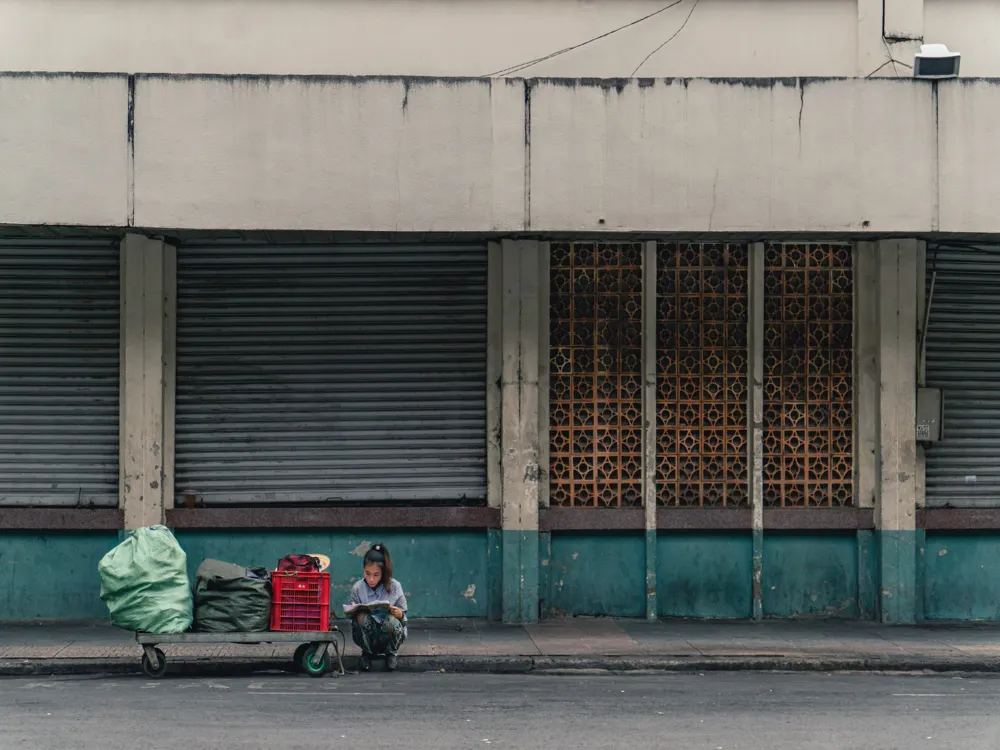Nestled in the bustling streets of Ho Chi Minh City, Pho Binh stands as a testament to Vietnam's rich history and cultural heritage. This historical site, more than just a building, is a symbol of resilience and a window into the past. Pho Binh, which translates to 'Peace Soup,' has a history that intertwines with the story of Vietnam, especially during the tumultuous times of war. Pho Binh was not always a significant historical site. Initially, it was a humble pho noodle soup shop, established in the 1940s. The shop gained prominence during the Vietnam War when it served as a secret meeting place for the Viet Cong leaders. Unbeknownst to many, the unassuming noodle shop was a strategic point for planning and coordinating significant operations. This dual role of Pho Binh as a culinary establishment and a revolutionary hub adds to its unique charm and significance in Vietnamese history. The noodle shop's unassuming appearance was a perfect cover for the clandestine activities that took place within its walls. It was here that strategies were formulated, and plans were set in motion that played a crucial role in the outcome of the Vietnam War. The shop's second floor, in particular, was a secretive meeting spot, inaccessible to regular customers and reserved exclusively for the leaders of the resistance. Today, Pho Binh has been preserved almost as it was during the war years. Visitors can still enjoy a bowl of traditional pho noodle soup on the ground floor, while the upper floor serves as a mini-museum. The artifacts, photographs, and memorabilia displayed here offer a poignant glimpse into the past, highlighting the shop's role in the war and its significance in Vietnamese history. The architecture of Pho Binh is a fascinating mix of traditional Vietnamese design and practical considerations borne out of its unique role during the war. The building, though simple in its construction, holds within it stories of a turbulent past and a resilient spirit. Pho Binh's architectural style is reflective of the typical Vietnamese buildings of its time. The structure is a two-story building with a tiled roof and wooden frames. Its design is modest yet functional, embodying the essence of Vietnamese architectural philosophy, which emphasizes harmony with nature and simplicity. The second floor of Pho Binh, which played a crucial role during the war, was designed to be inconspicuous and inaccessible to the uninitiated. This floor was where critical meetings took place, and it was ingeniously designed to escape detection. The narrow stairway leading to it was hidden from plain sight, adding to the secretive nature of the meetings held there. Over the years, efforts have been made to preserve Pho Binh in its original form. While necessary restorations have been carried out to maintain the building's structural integrity, care has been taken to retain its historical authenticity. This dedication to preservation allows visitors to experience the building much as it was during the war years, offering a tangible connection to the past. To make the most of your visit to Pho Binh, it's essential to plan ahead. Consider visiting during off-peak hours to avoid crowds and have a more intimate experience. Also, check for any special events or exhibitions that might be taking place during your visit. Before visiting, familiarize yourself with the history of the Vietnam War and the role of Pho Binh. This background knowledge will enrich your experience and provide a deeper insight into the significance of the site. Don't miss the opportunity to try the traditional pho noodle soup at Pho Binh. Enjoying a bowl of pho in the very place where history was made adds a unique dimension to the experience. Pho Binh is located in the heart of Ho Chi Minh City and is easily accessible by various means of transportation. Visitors can opt for a taxi, a popular and convenient choice, or experience the local culture more intimately by taking a motorbike taxi. For those who prefer public transportation, local buses also serve routes that pass near Pho Binh. Read MoreWelcome to Pho Binh in Ho Chi Minh City: A Historical Gem
The Intriguing History of Pho Binh
Pho Binh During the War: A Hidden Stronghold
Preservation of Pho Binh's Legacy
Architecture of Pho Binh: A Blend of History and Simplicity
Design Elements Reflecting Vietnamese Traditions
The Secretive Second Floor
Restoration and Preservation Efforts
Tips for Visiting Pho Binh
Planning Your Visit
Understanding the Historical Context
Exploring the Cuisine
How To Reach Pho Binh
Pho Binh
Ho Chi Minh City
₹ 17,501 onwards
View ho-chi-minh-city Packages
Weather :
Tags : Food & Drink
Timings : 6:00 AM - 11:30 PM
Entry Fee : Noodle Soup: VND 60,000 - VND 70,000,
Museum: VND 35,000
Planning a Trip? Ask Your Question
Ho-chi-minh-city Travel Packages
View All Packages For Ho-chi-minh-city
Top Hotel Collections for Ho-chi-minh-city

Private Pool

Luxury Hotels

5-Star Hotels

Pet Friendly
Top Hotels Near Ho-chi-minh-city
Other Top Ranking Places In Ho-chi-minh-city
View All Places To Visit In ho-chi-minh-city
View ho-chi-minh-city Packages
Weather :
Tags : Food & Drink
Timings : 6:00 AM - 11:30 PM
Entry Fee : Noodle Soup: VND 60,000 - VND 70,000,
Museum: VND 35,000
Planning a Trip? Ask Your Question
Ho-chi-minh-city Travel Packages
View All Packages For Ho-chi-minh-city
Top Hotel Collections for Ho-chi-minh-city

Private Pool

Luxury Hotels

5-Star Hotels

Pet Friendly






















